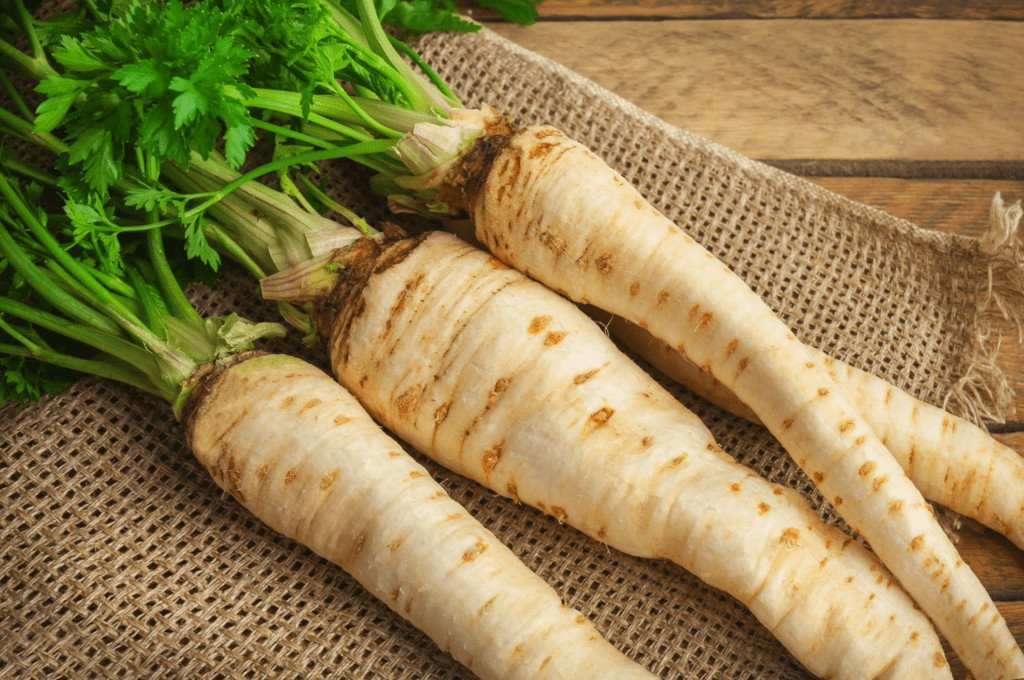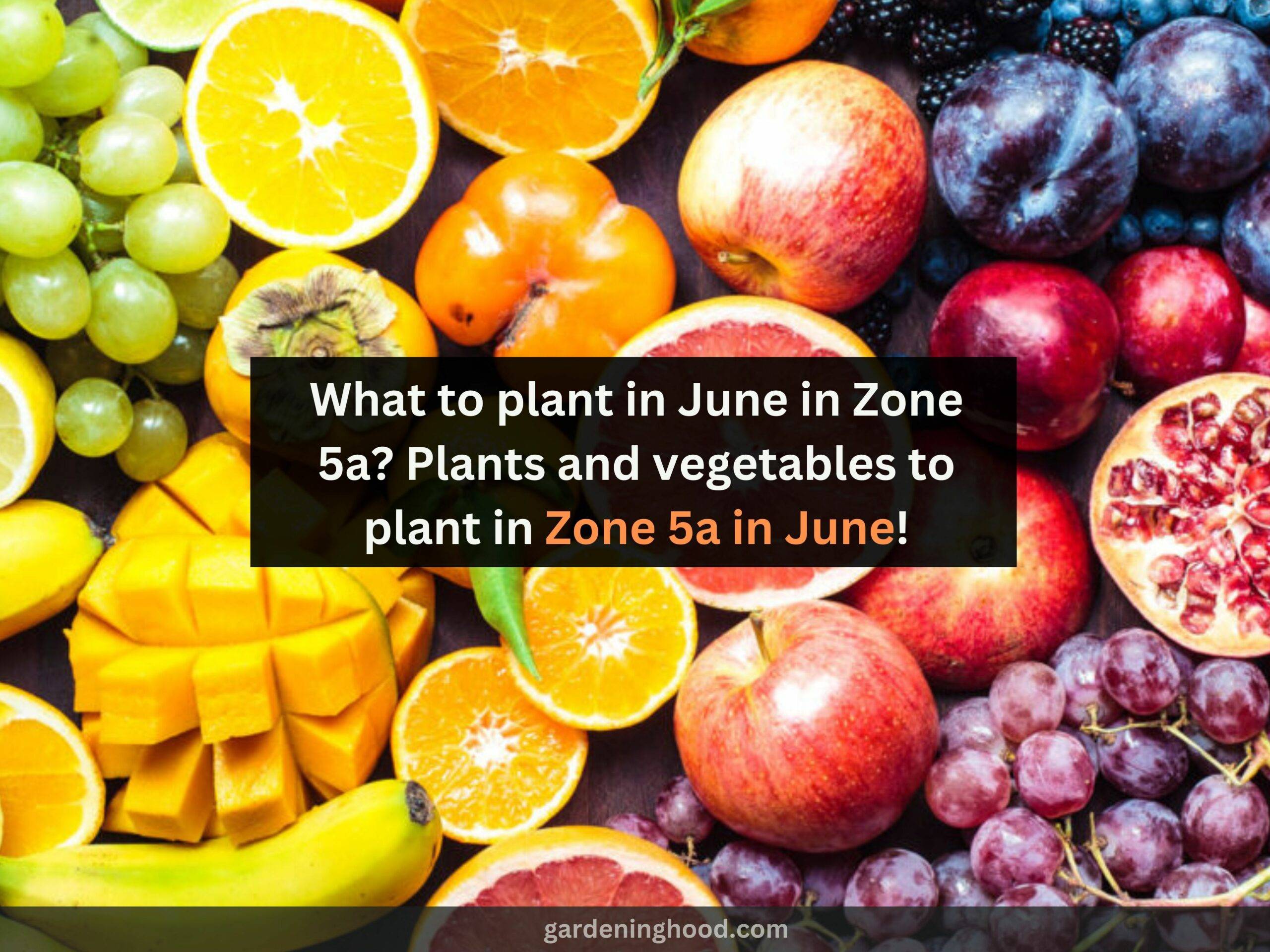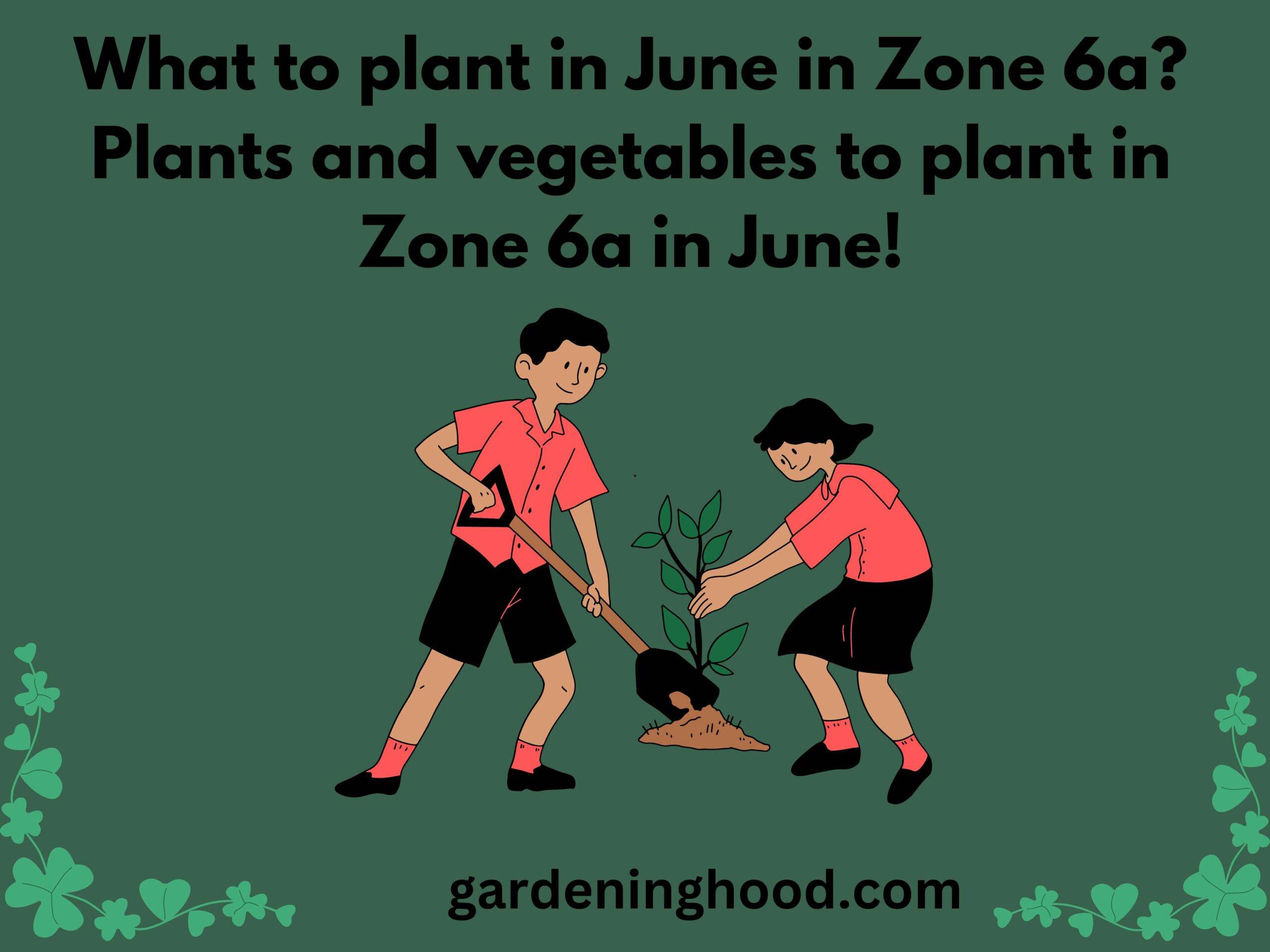What to plant in June in Zone 13a? Plants and vegetables to plant in Zone 13a in June!
Hey folks! Welcome back!
I hope you are doing great in your gardening field. The growing zone is called a hardiness zone which means the minimum average temperatures in that region and that temperature shows the gardener when to begin gardening or when to start growing the plants.
In this article, I have shared my experience of gardening in Zone 13a and discussed what to plant in June Zone 13a.
Key takeaways:
- In June in zone 10a, the temperature you can experience is up to 60°F which is considered the coldest year.
- Sometimes you would also experience a temperature as low as 65°F.
What is the Hardiness zone?
The Hardiness zone is one of the zones that tells you about the average lowest climatic temperature for a particular geographical area. As you already know zone 1 is one of the coldest zones whereas zone 11 is one of the warmest zone.
So the plants that will grow in the cold temperatures then they will grow in Zone 1, on the other hand, the plants that require warm temperatures will grow in Zone 11. Zone 13 is another type of zone that is frost-free as it has more summer temperatures as compared to other zones.
In this zone, there is also little rainfall. As you know, various water vegetables are supplements, they will not be able to grow in Zone 13. whereas the ones that will grow with the hand watering will grow best in the area.
Flowers
Its flowers are smooth and contain slender stems. You, so that the petals of this plant face down with their rings that come in the color of pink, purple, yellow, white, etc all around the base.
Also, it will produce amazing flowers in the plant in the shade of rose-colored, lavender, and white-colored. Its stamens are yellow to purple.
Leaves and stems
What about the leaves and stems of this plant? You will see that the leaves of this plant are oval and elliptic shaped and will grow about 1 ½ inches to 12 inches high.
It will grow about ½ to 3 inches wide. It is round from the tip. Its stems are single or multiple from the base. This is also hairless and comes in shades of green to purple.
Fruits
The fruits in this zone are oval shaped to cylindrical shaped that are¼ to nearly ¾ inch long, you can easily attach them at the tip.
This capsule is not thin as its wall is thick, so you can easily use it. When it dries, it trunks into a reddish-brown color.
What to plant in June in Zone 13a?
The parts of the United States that are under Zone 13a are Hawaii, Alaska, and Puerto Rico. Also, zone 13a does run latitudinally over the US from east to west.

- The minimum average temperature that covers over a range of 10 degrees F with is divides zone 13 into two subzones such as:
- Zone 13: the minimum average temperature of zone 13 is 60 to 70 degrees F.
- Zone 13a: the minimum average temperature of zone 13a is from 60 to 65 degrees F.
- Zone 13b: the minimum average temperature of zone 13b is from 65 to 70 degrees F.
Plants and vegetables to plant in Zone 13a in June!
Below is a list of planting that will guide you for Zone 10a in June:
Vegetables:
The following shows the list of the vegetables that you can plant in Zone 13a in June:
- Artichokes
- Asparagus
- Asparagus lettuce
- Asparagus peas
- Beets
- Bell Peppers
- Bittercress
- Black pepper
- Black radish
- Bok Choi
- Broccoli
- Brussels Sprouts
- Bunching Onions
- Cabbage
- Cantaloupes
- Carrots
- Cauliflower
- Celeriac
- Celery
- Chard
- Chicory
- Chinese cabbage
- Chives
- Corn
- Corn salad
- Cucumbers
- Eggplants
- Endive
- Fennel
- Field Peas
- Garden cress
- Garlic
- Gherkins
- Green beans
- Hamburg root parsley
- Iceberg lettuce
- Indian cress
- Jerusalem artichokes
- Kale
- Kohlrabi
- Leeks
- Lettuce
- Melons
- Mustard greens
- Napa cabbage
- Neeps
- New Zealand spinach
- Okra
- Onions
- Parsnip
- Pea
- Peanut
- Pearl onions
- Peas
- Pole beans
- Potatoes
- Pumpkins
- Purslane
- Radicchio
- Radishes
- Red cabbage
- Rhubarb
- Romaine lettuce
- Romanesco
- Runner beans
- Salsify
- Savoy cabbage
- Scallions
- Shallots
- Snap beans
- Snow peas
- Spinach
- Squash
- Strawberries
- String beans
- Sweet corn
- Sweet Potatoes
- Tomatoes
- Tree onions
- Turnips
- Watercress
- Watermelon
- Welsh onion
- Zucchini

Herbs:
The following shows the list of the herbs that you can plant in Zone 13a in June:
- Anise
- Basil
- Borage
- Chamomile
- Chervil
- Chinese celery
- Chinese chives
- Chives
- Cilantro
- Dill
- Garden Orache
- Lemon balm
- Lemon grass
- Lovage
- Mustard
- Oregano
- Parsley
- Pennyroyal
- Redvein Dock
- Rosemary
- Sorrel
- Spearmint
- Stevia
- Summer Savory
- Sweetscented Bedstraw
- Tarragon
- Thyme
- Winter Savory

Flowers:
The following shows the list of the flowers that you can plant in Zone 13a in June:
- Abutilon
- Achillea
- Achimenes
- Aegopodium
- African Daisy
- Ageratum
- Ajuga
- Alstromeria
- Alternanthera
- Alternaria
- Alyssum
- Amaranthus
- Anagallis
- Anchusa
- Anemone
- Angelonia
- Angel’s Trumpets
- Arabis
- Arctotis
- Argyranthemum
- Armeria
- Artemesia
- Asparagus Fern
- Asters
- Astilbe
- Aubretia
- Aubrieta
- Aurinia
- Axilflower
- Baby Blue Eyes
- Baby’s Breath
- Bachelor Buttons
- Bacopa
- Balloon Flower
- Balsam
- Banana
- Basket of Gold
- Bee Balm
- Begonias
- Bellis
- Bells of Ireland
- Bidens
- Bishop’s Weed
- Black Eyed Susans
- Bleeding Hearts
- Bloodleaf
- Blue Lace Flowers
- Blue Throatwort
- Bougainvillea
- Bower Vine
- Brachycome
- Browallia
- Brunfelsia
- Buddha belly plant
- Bunny Tails grass
- Caladium
- Calendula
- Calibrachoa
- California Poppy
- Calla Lily
- Calliopsis
- Campanula
- Candytuft
- Canna
- Cardinal Flower
- Carnation
- Catharanthus
- Celosia
- Centaurea
- Cerastium
- Chocolate Daisy
- Chrysanthemum
- Chrysanthemums
- Chrysocephalum
- Cigar Plant
- Cleome
- Clover
- Coleus
- Columbine
- Common hollyhock
- Copperleaf
- Coral Bells
- Coreopsis
- Cosmos
- Crassula
- Creeping Phlox
- Creeping Zinnia
- Crossandra
- Cuphea
- Dahlberg Daisy
- Dahlia
- Dahlias
- Dallas Fern
- Datura
- Daylily
- Decorative Kale
- Delphinium
- Dianthus
- Diascia
- Dichondra
- Didiscus
- Digitalis
- Dipladenia
- Doronicum
- Dracaena
- Dusty Miller
- Echinacea
- Elephant Ears
- English Daisy
- Erysimum
- Euphorbia
- Evolvulus
- Fanflower
- Felicia Daisy
- Festuca
- Feverfew
- Fiber Optic Grass
- Firebush
- Flax
- Flowering Kale
- Flowering Maple
- Flowering Tobacco
- Flower-of-an-Hour
- Forget-Me-Not
- Fountain Grass
- Four O’ Clock
- Four-o-clock flower
- Foxglove
- Fuchsia
- Gaillardia
- Galium
- Garden Mums
- Gayfeather
- Gazania
- Geranium
- Gerbera
- Geum
- Gladiolus
- Gloriosa Daisy
- Gloriosa Lily
- Gomphrena
- Guara
- Gypsophila
- Hamelia
- Hardy Asters
- Hardy Hibiscus
- Helianthemum
- Heliotrope
- Hemerocallis
- Heuchera
- Hibiscus
- Hollyhocks
- Hosta
- Hypericum
- Iberis
- Iceland Poppy
- Impatiens
- Iresene
- Jasmine
- Lantana
- Larkspur
- Lavender
- Lavender Cotton
- Lenten Rose
- Liatris
- Lisianthus
- Lithospermum
- Livingstone Daisy
- Lobelia
- Lotus Vine
- Lunaria
- Lupine
- Lysimachia
- Maltese Cross
- Marguerite Daisy
- Marigold
- Matricaria
- Mecardonia
- Melampodium
- Mexican Feather Grass
- Millet
- Mimulus
- Missouri Primrose
- Monarda
- Money Plant
- Monkey Flower
- Moon Vine
- Morning Glory
- Myosotis
- Napa Valley Fern
- Nasturtium
- Nemesia
- Nicotiana
- Nierembergia
- Nigella
- Nolana
- Oenothera
- Oleander
- Oriental poppies
- Ornamental Grasses
- Osteospermum
- Oxalis
- Painted Daisies
- Painted Tongues
- Pampas Grass
- Pansies
- Pennisetum
- Penstemon
- Pentas
- Peonies
- Perilla
- Periwinkles
- Petunias
- Phlox
- Pincushion Flower
- Platycodon
- Plectranthus
- Polka Dot Plant
- Polygonums
- Poppies
- Portulaca
- Primroses
- Primula
- Purple Bell Vines
- Purple Coneflower
- Purple Rock Cress
- Pyrethrum
- Red Hot Pokers
- Regal Geranium
- Rock Cress
- Roses
- Ruby Grass
- Rudbeckia
- Sagina
- Salpiglossis
- Salvia
- Santolina
- Sanvitalia
- Saxifraga
- Scabiosa
- Scaevola
- Scarlet Pimpernels
- Scarlet Runner Beans
- Schizanthus
- Scutellaria
- Sedum
- Shasta Daisys
- Skullcap
- Snapdragons
- Snow-in Summer
- Statice
- Steirodiscus
- Stocks
- Stoneseed
- Strawflowers
- Streptocarpella
- Sunflowers
- Sutera
- Swan River Daisy
- Sweet Peas
- Sweet Potato Vine
- Sweet Sultan
- Sweet Williams
- Sweet Woodruff
- Tagetes
- Tall Phlox
- Thunbergia
- Tithonia
- Torch Lilys
- Torenia
- Trachelium
- Trailing Portulaca
- Transvaal Daisy
- Trifolium
- Tritoma
- Tropical Hibiscus
- Tropical Water Plants
- Twinspur
- Verbena
- Veronica
- Vinca Vine
- Violas
- Violets
- Xerianthemum
- Yarrow
- Zinnia

Caring for Plants and vegetables in Zone 13a in June
Light needs
- It requires healthy sunlight to grow well in your garden area. They can thrive well in partial sunlight.
- As you know these plants are in their dormant period at the time of summer, so you can plant them under the high canopies of trees.
- It will help in providing filtered light to the plant which will help them grow at the time of spring.
- At the time of winters, they can survive in the full sunlight.
Soil needs
- Shooting star plants will thrive well in well-drained soil or sandy loamy soil for its growth.
- You do not need to use the clayey soil for these plants.
- Soil is that medium for the plants that will help them grow at their best.
- So, it is important to choose the best soil for your garden area.
Watering needs
- These plants are not too demanding when it comes to watering them. So, you can easily maintain the growth of the plant.
- They can grow well in 1 inch of water per week when the plant is in its growing period.
- When the plant is dormant in summer, then it does not require much water to grow as less water will be sufficient for them.
- This period will make the plants tolerate the drought.
Temperature and Humidity needs
- They require a normal humidity level for their growth. You have to provide this plant with a mild temperature to grow.
- They will grow well in the rains of April till June, so keep your plant outside at that time.
- Also, the soil of the plant should be moist. For that, you have to maintain the level of the soil.
Fertilizer needs
- The fertilizer needed by this plant is not much, it is because they will grow in their medium.
- Extra fertilization is not required by them because they are already rich in soil and nutrients.
- But if the soil is poor, then you can add some of the compost to it when the plant is growing actively in its season.
Conclusion:
Concluding here that here minimum average temperatures do indicate if the plants and trees will be able to grow well in zone 13 but you also need to know the temperature is not fixed. So you can go through the list to find what to plant in zone 13a.
Thanks for reading! Happy Gardening!


